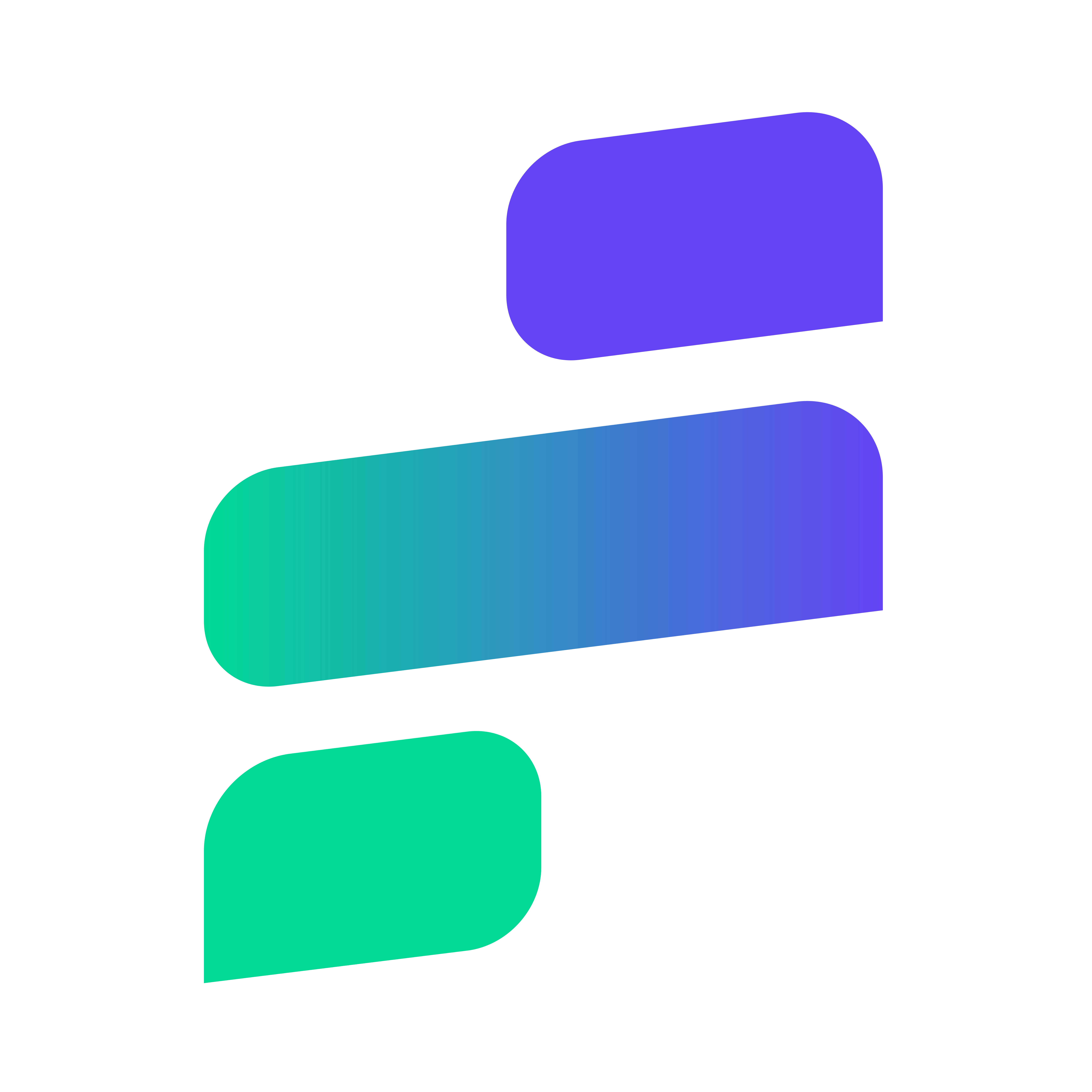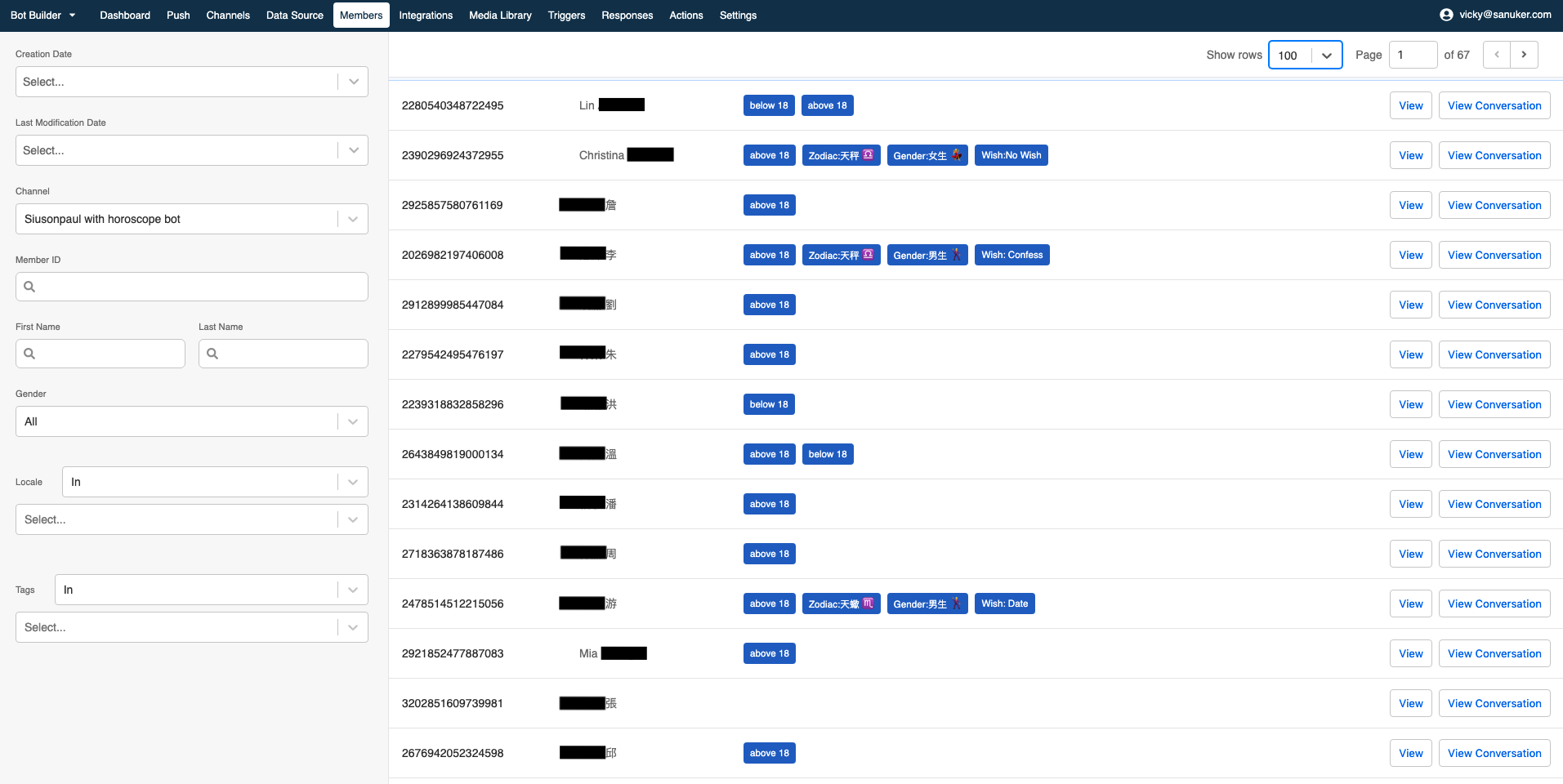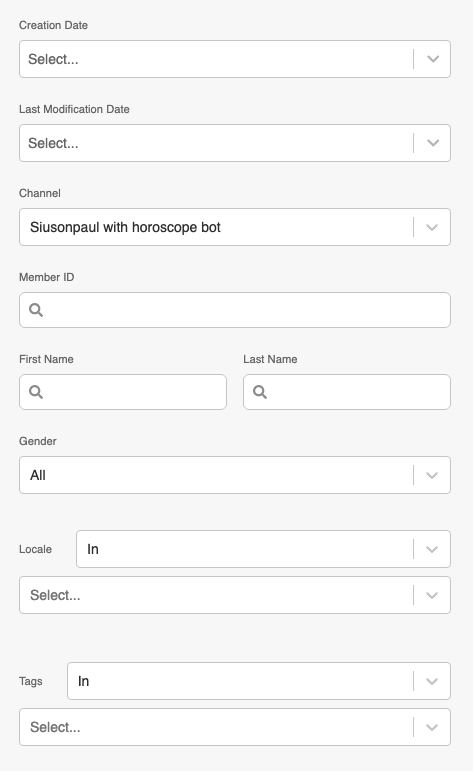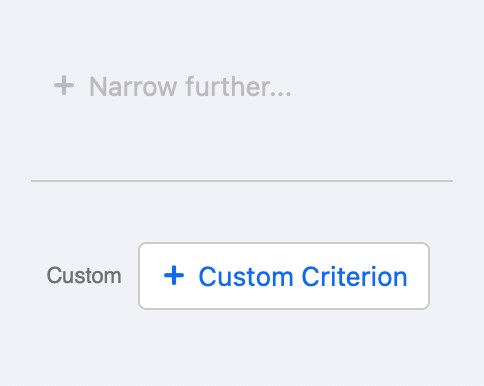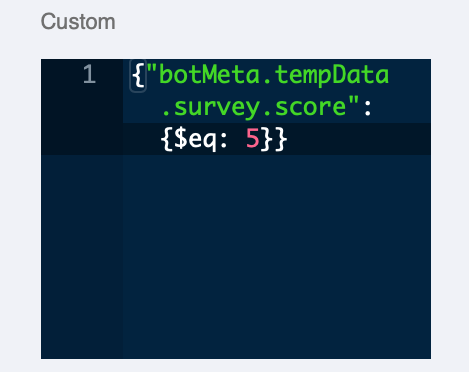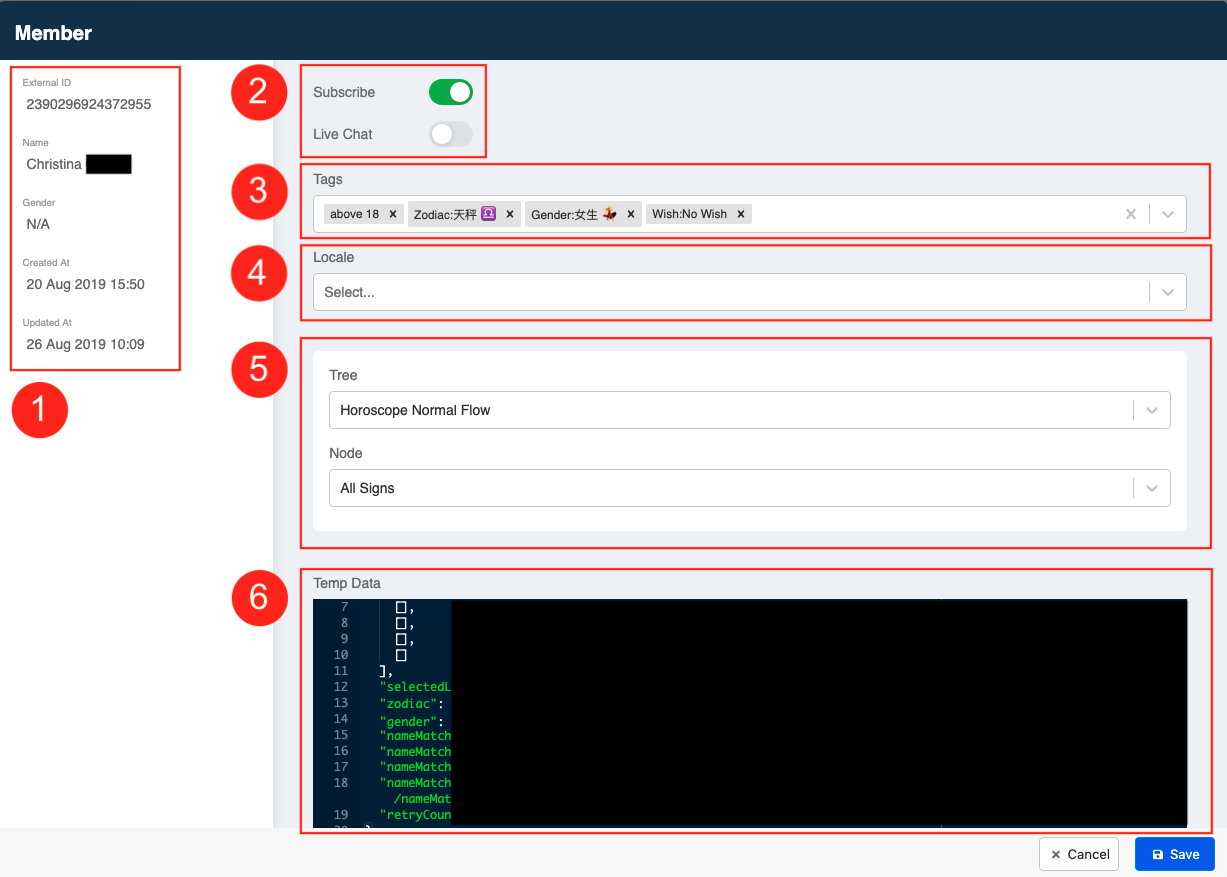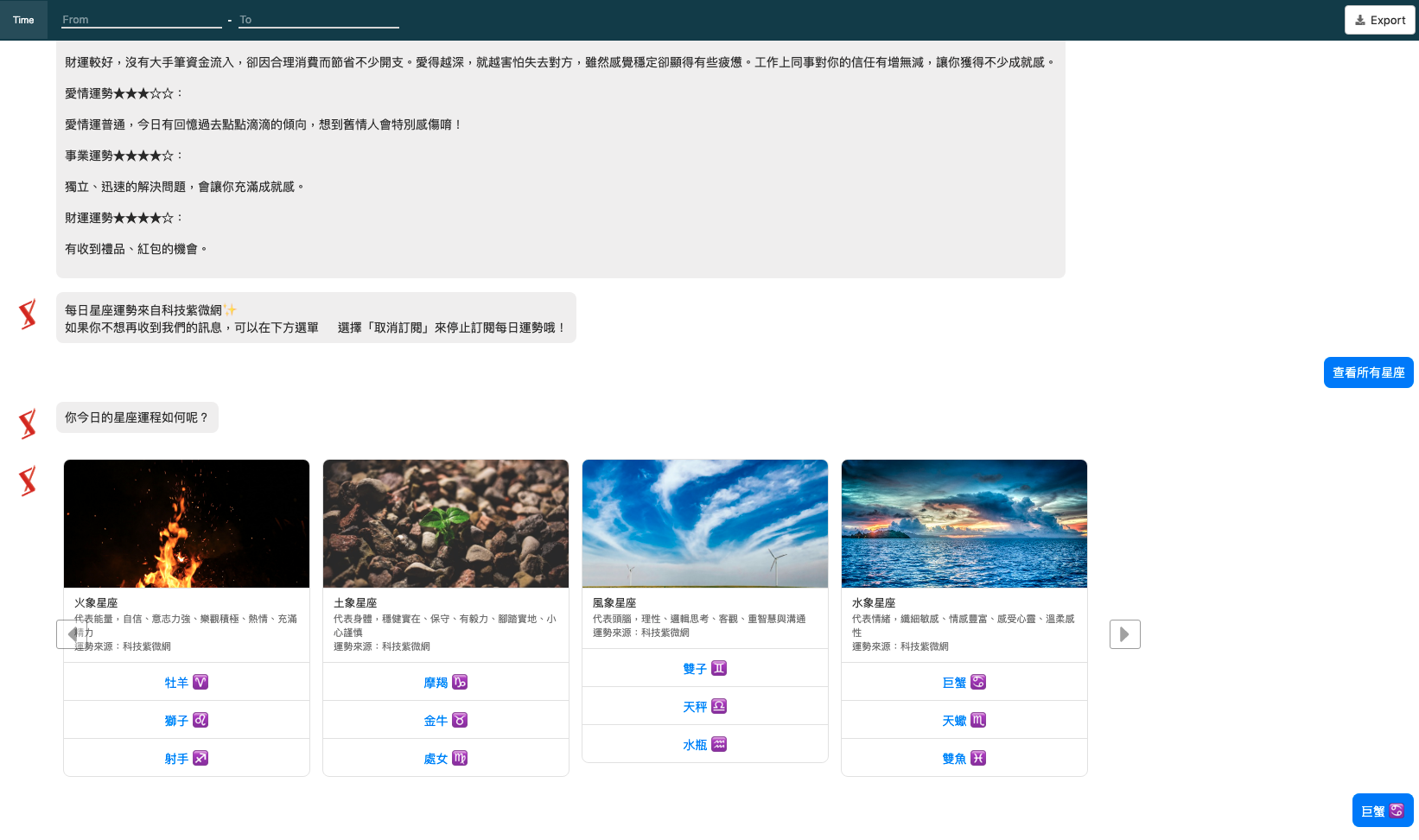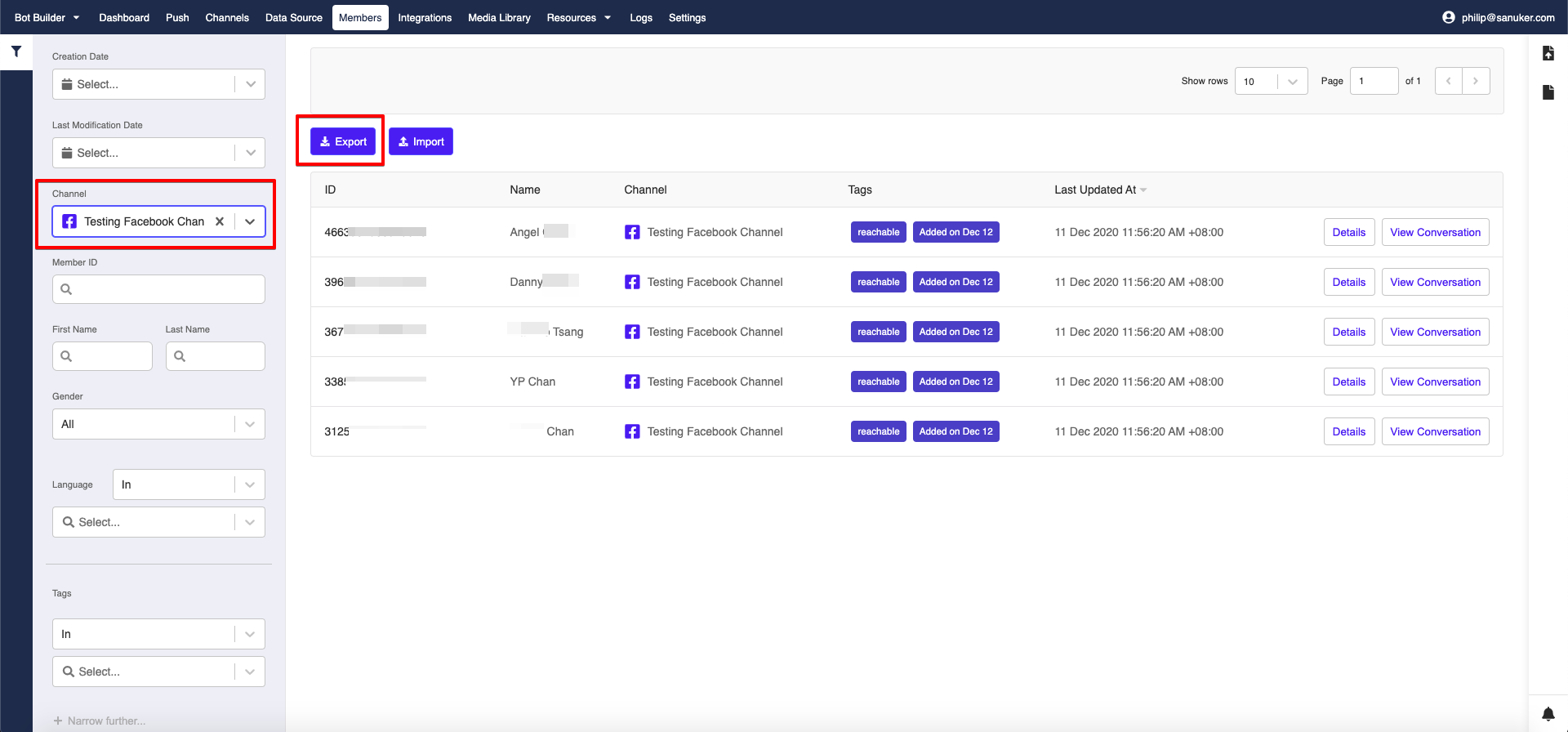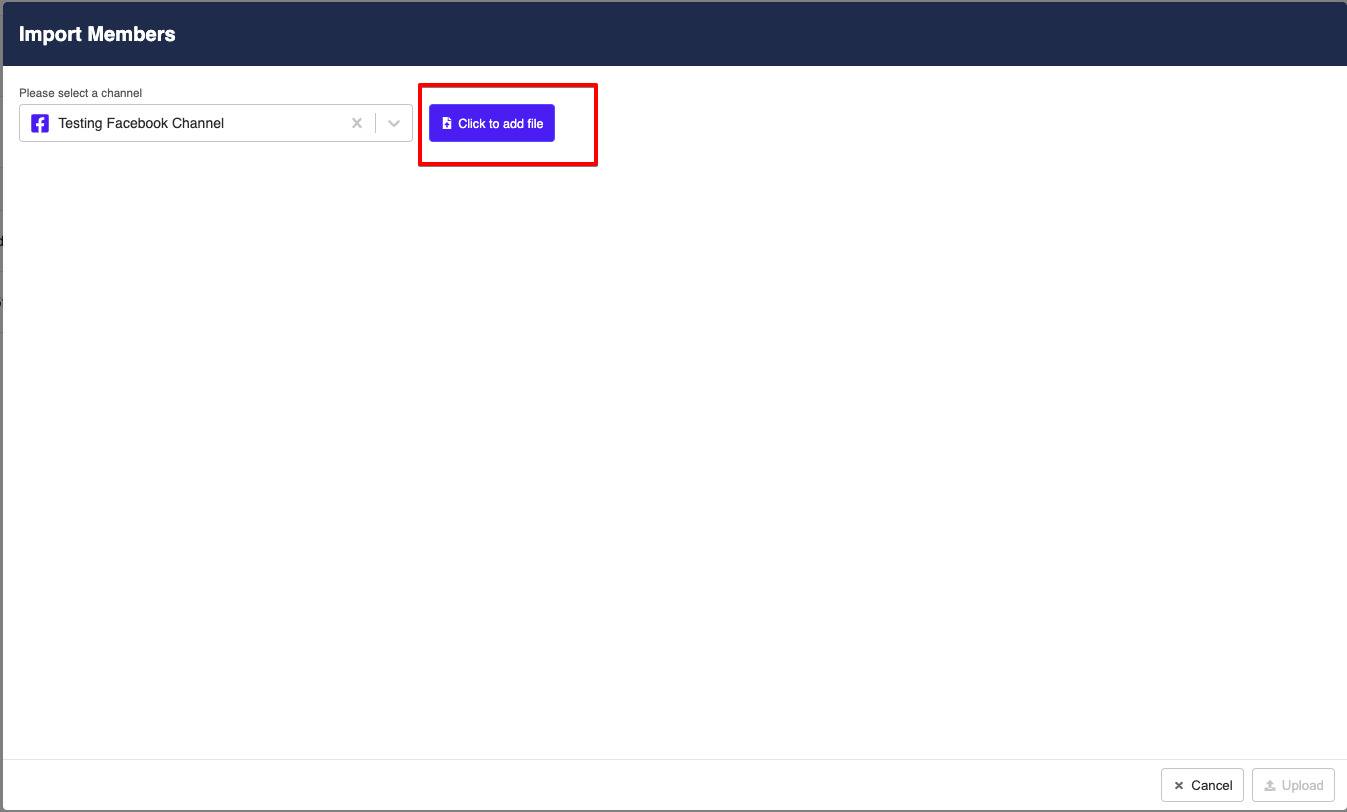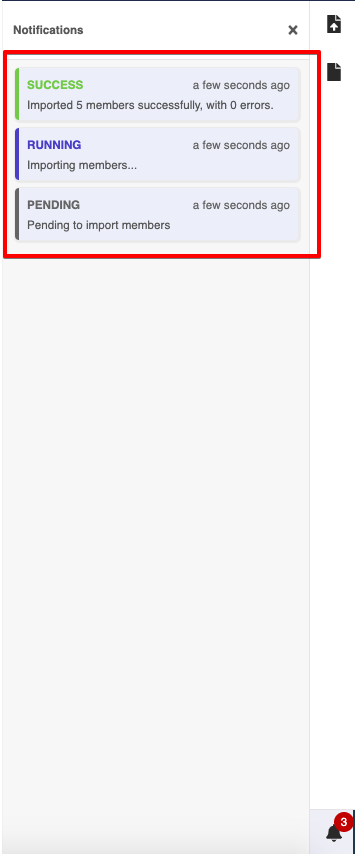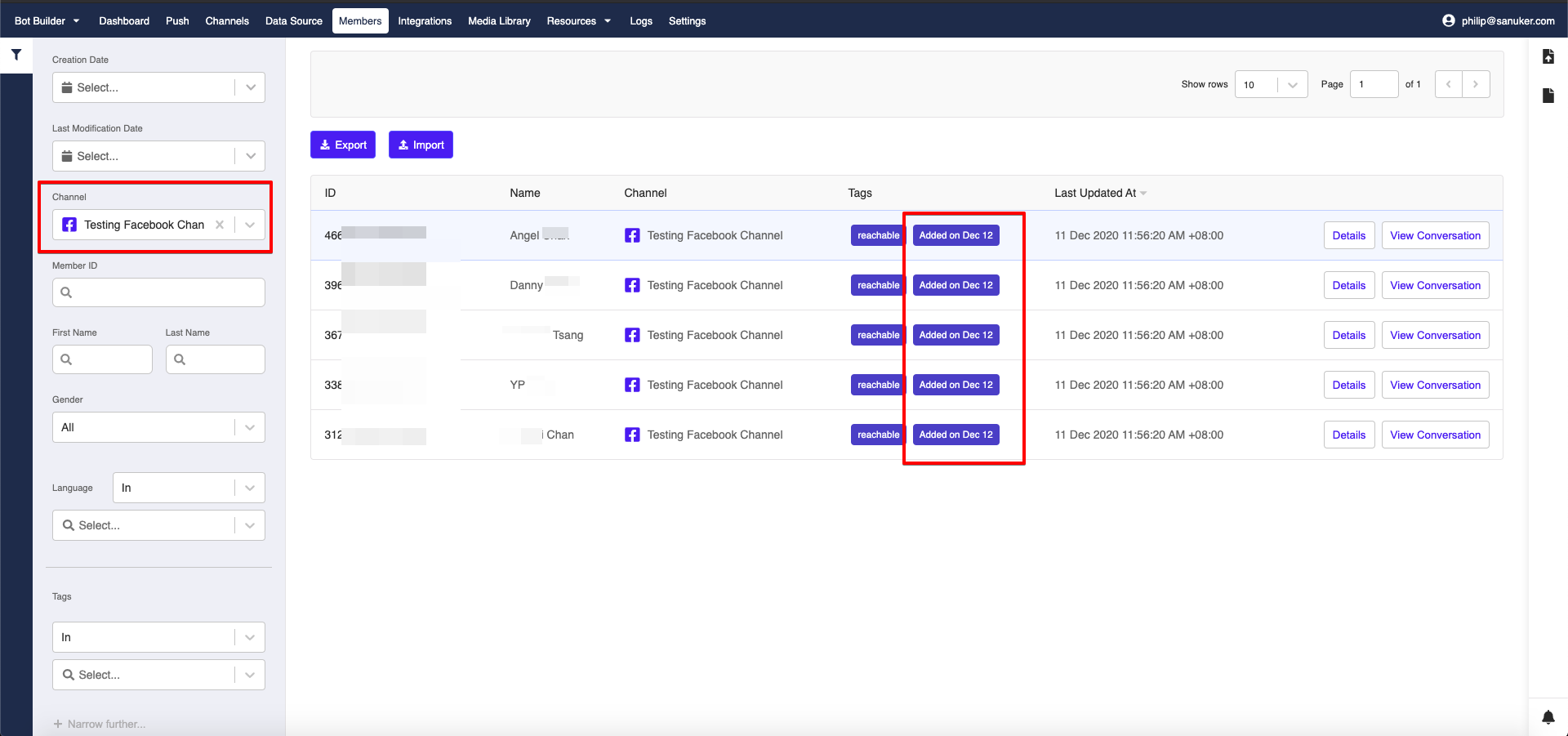Members
Members is the section where you can find the profile of all your subscribers of your chatbots. Anybody who have talked to your chatbot will be displayed here in list view. You can take a look at their tags and detailed conversation history.
Click here to view and manage your subscribers.
Filtering
On your left, there is a section for your to filter out specific groups of members by Creation Date, Last Active Date, Channel, External ID, Name, Gender, Locale or Tags.
The most common one will be filtering by channels. Just select your filter option and you will see the member details automatically refreshed on your right.
Custom Filter
Apart from the basic filter, you can also scroll to the bottom and use the custom filter.
By using MongoDB Compass, you can enter your customized criteria, then search and sort any type of object in the member profile. You can also apply the basic filter and the custom filter simultaneously. For example, the custom filter allows you to filter by the information stored in Meta or tempData.
To learn how to apply tempData, you can refer to the advanced standard procedure.
Click here to view all the objects stored under the Member object.
Example 1:
If you have customer satisfaction question, and the score is saved in tempData, you can use filter the members who gave the same score.
Given the score is saved in tempData in this format:
tempData: {
"survey": {
"score": 5
}
}
You can search all the members who gave 5 points:
{"botMeta.tempData.survey.score": {$eq: 5}}
Click here to learn how to how query on embedded documents with MongoDB Compass.
Example 2:
If you want to filter the members who talked to your live chat support, and gave a score of 3 or above, you can also apply two criteria.
Given the information is saved in tempData in this format:
tempData: {
"livechat": true
"survey": {
"score": 4
}
}
You can search for the members who match with both criteria.
{"botMeta.tempData.livechat": true, "botMeta.tempData.survey.score": {$gte: 70}}
Click here to learn the Query and Projection Operators in MongoDB.
Basic Information
You will be able to find the following information within a member: External ID, Name, Tags, Member Details and Conversation History.
| Property | Description |
|---|---|
| External ID | Applicable to all platforms; a unique string of ID to identify the identity of each member in different platform |
| Name | Only applicable to platforms that provide the name of users |
| Tags | Applicable to all platforms; custom tagging added in Node Inspector; each tag will be displayed as a blue label |
| View | Click to view more member details |
| View Conversation | Click to view all the conversation history of the specific member |
View Member Details
If you click the "View" button, you will be able to read more in-depth about a subscriber. Here're a list of items you will be able to find in the modal:
| No. | Property | Description |
|---|---|---|
| 1 | Basic Information | Member's basic information including External ID, Name, Gender, Creation Date/Time and Last Activity Date/Time |
| 2 | Subscribe/Live Chat | The button will be toggled on automatically once the users subscribe to your chatbot or enter into live chat mode; you may also switch the buttons on/off manually |
| 3 | Tags | All member tags belong to this member; you can manually add/delete specific tags created for this channel |
| 4 | Locale | Indicate the language setting of this member; you can manually assign another language to the member |
| 5 | Tree & Node | The position of the user currently is at |
| 6 | Temp Data | Any other useful data stored in the member's profile, such as the choices made by the users; you can custom set it in actions |
View Conversation History
If you click the "View Conversation" button, the website which shows the full conversation history of this user will be opened in a new tab. The grey messages on the left are sent by the bot while the blue messages on the right are sent by the user.
You can also click the top left date picker to filter date/time within a specific range.
If you want to save the conversation as a copy in your local computer, you may click the "Export" button at top right. You will be able to save the conversation history in .CSV.
Import & Export
Export Member List
You can easily export the list of existing members by clicking the "Export" button on top of the member list. The .csv file will be exported with details of the filtered members.
Import Member List
If you already have an existing member list from another source, you can import these members (in .csv format) to Stella. You just need to make sure the following information is correct:
| Label | Description | Required |
|---|---|---|
| externalID | The external ID of the member; It is in a specific format for specific platforms (i.e. Facebook is PSID & WhatsApp is the phone number) | Y |
| firstName | The first name of the member | N |
| lastName | The last name of the member | N |
| profilePic | The profile picture of the member | N |
| locale | The locale of the member | N |
| gender | The gender of the member | N |
| tag | The existing tags of the member; It must be text and separated with "," if there are multiple tags | N |
Getting Hands-on
- Click "Import" on top of the member list.
- Choose the corresponding channel to be imported. For Facebook members, please make sure you have the correct channel as the externalID (i.e. PSID) is specific to a Facebook page.
- Add the
.csvfile. Please make sure your file starts the first row with the fields (i.e. Keys) and has at least 2 columns (If you are only importing the externalID, you may leave the second column blank).
You may download the sample member list in .CSV here.
- Map & drag the Labels to the Keys of the file.
- You can also add a tag to indicate this set of members are uploaded on a specific occasion/time/date.
- Click "Upload". If there are duplicated members, their information will be merged under the same external ID.
- Check your notification to make sure your file is imported successfully.
- Check your member list.
